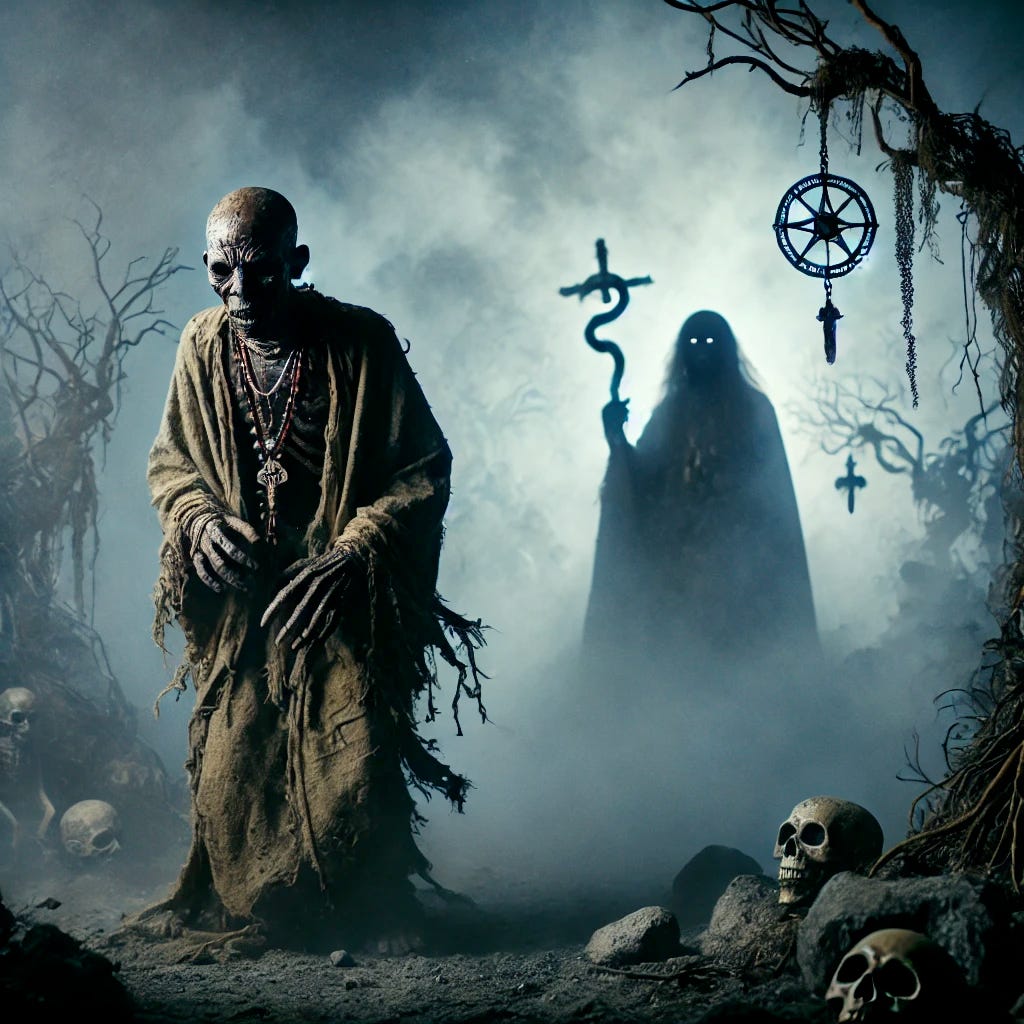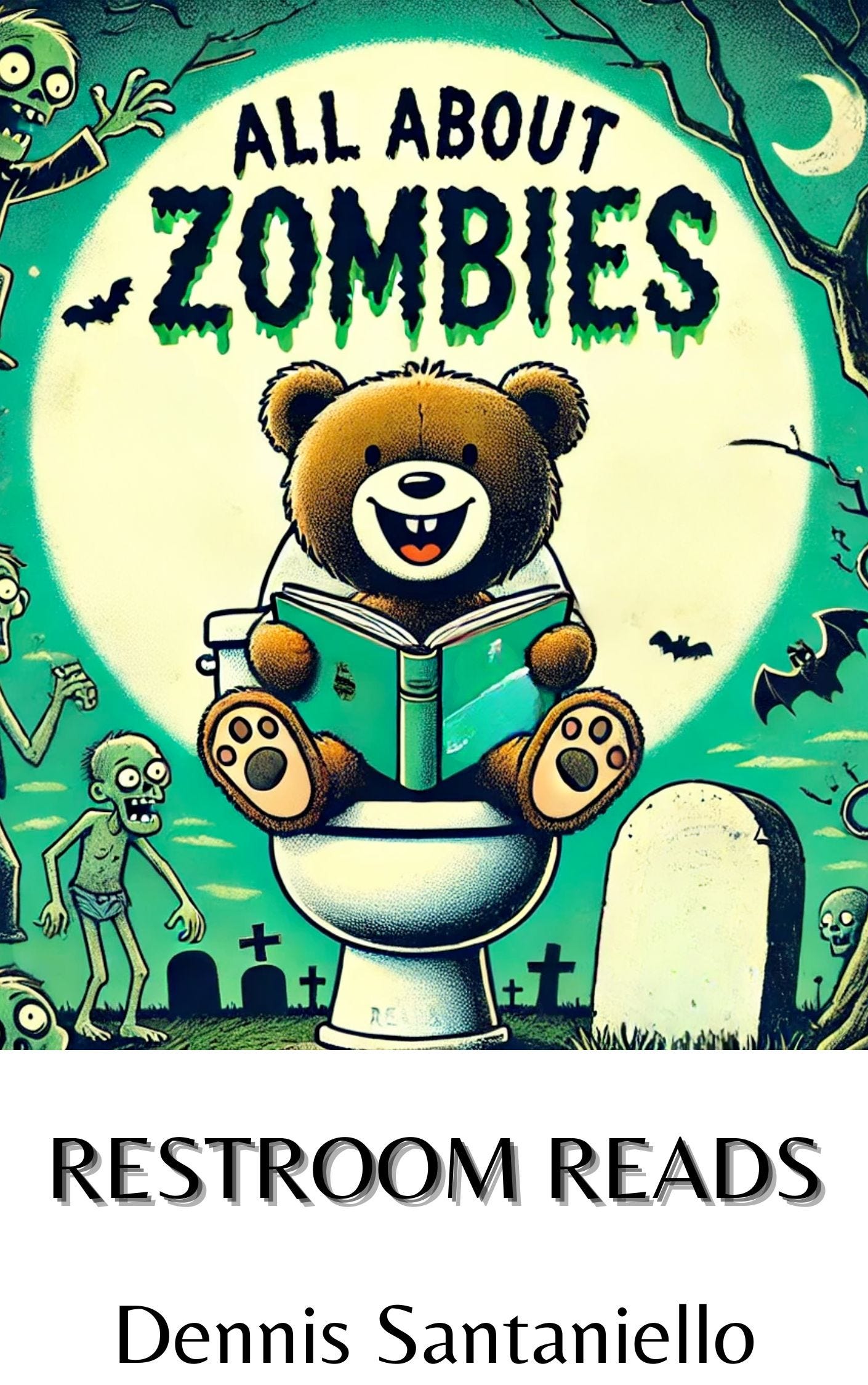The Haitian Roots of Zombies
While ancient myths from across the globe feature undead figures, the zombie as we know it has much more specific origins—ones that lie in the traditions of Haitian Vodou. In Haitian folklore, zombies aren't just spooky creatures that come back from the dead. They are people who have been brought back from death against their will, a powerful symbol of slavery and oppression. This chapter delves into the rich and complex history of the Haitian zombie, exploring its cultural significance, its roots in the brutal history of slavery, and its eventual transformation in Western media.
Zombification in Haitian Vodou
Haitian zombies have nothing to do with a viral outbreak or an insatiable hunger for brains. Instead, they are often thought to be victims of a bokor, a Vodou sorcerer who uses magic to resurrect the dead and enslave them. In these stories, zombies aren't free-roaming monsters—they are often controlled by a master who forces them to do labor. In a land with a dark history of slavery, these stories are deeply symbolic, representing the ultimate dehumanization: having even death offer no escape from servitude.
The process of zombification in Haitian folklore is complex and multifaceted. It typically involves the use of powerful drugs and poisons combined with magical rituals. The victim is said to be put into a death-like state, buried, and then later resurrected by the bokor. Upon resurrection, the zombie is stripped of their will, personality, and even their soul, becoming little more than an empty shell to be commanded.
In Haitian Vodou culture, zombies weren't feared because they were violent—they were pitied because they were trapped in a state of living death. The fear lay in becoming one of them, losing control over your body and soul. This concept of loss of autonomy and identity resonates deeply within Haitian culture, where the struggle for freedom and self-determination has been a constant theme throughout history.
The idea of the zombie in Haitian culture goes beyond mere folklore. It's intertwined with complex spiritual beliefs about the nature of the soul and the afterlife. In Vodou belief, a person's soul is composed of multiple parts, including the ti bon ange (little good angel) and the gros bon ange (big good angel). Zombification is said to occur when the ti bon ange is captured, leaving the body an empty vessel without will or consciousness.
Slavery and the Birth of the Zombie Legend
Haiti's history is steeped in the horrors of slavery. Under French colonial rule, enslaved Africans were brought to the island to work in brutal conditions. The sugar plantations of Saint-Domingue, as Haiti was then known, were infamous for their cruelty and high mortality rates. Haitian Vodou evolved as a syncretic religion in this crucible of suffering, blending elements of African spirituality, Catholicism, and indigenous practices. The concept of zombification is believed to have emerged from this cultural milieu.
For enslaved people, the fear of being turned into a zombie symbolized the ultimate loss of freedom. In this terrifying afterlife, even death could not offer liberation. In a very real sense, the Haitian zombie was a direct reflection of the lived experience of slavery. The zombie represented a loss of physical freedom and a complete erasure of self. This state mirrored the dehumanizing effects of the slave system.
The zombie myth also served another purpose in Haitian slave society. It became a tool of control and resistance. Slave owners used the threat of zombification to instill fear and obedience in the enslaved population. Conversely, belief in zombies and Vodou practices provided enslaved people with a sense of power and identity in a system designed to strip them of both.
The Haitian Revolution (1791-1804), the only successful slave revolt in history, further cemented the importance of Vodou and its associated beliefs in Haitian culture. Vodou rituals and beliefs, including those surrounding zombies, played a crucial role in uniting the revolutionaries and providing spiritual strength during the long struggle for freedom.
Zombies in Western Media: The Early Years
Haitian Vodou zombies first entered Western consciousness in the 1920s, largely thanks to books like “The Magic Island” by William Seabrook. Published in 1929, Seabrook's sensationalized account of Haitian culture and Vodou practices captured the imagination of Western readers. While often inaccurate and steeped in colonial attitudes, Seabrook's work introduced many to the concept of the Haitian zombie.
Hollywood soon followed suit, with films like “White Zombie” (1932) introducing the idea of Haitian-style zombies to American audiences. Starring Bela Lugosi as an evil Vodou master, “White Zombie” was the first feature-length zombie film. These early depictions were more closely tied to the original Vodou concept, with zombies portrayed as mindless slaves under the control of an evil master.
However, as zombie stories evolved, particularly in the hands of Western filmmakers and writers, the Haitian roots were stripped away. The zombie became more about horror and fear of the mindless horde than a commentary on slavery and colonialism. This transformation reflected broader cultural attitudes and fears, moving away from the specific cultural context of Haiti to become a more generalized symbol of societal breakdown and loss of individuality.
The 1940s and 1950s saw a series of B-movies that further distanced the zombie from its Haitian origins. Films like “I Walked with a Zombie” (1943) maintained some connection to the Caribbean setting. Still, increasingly, zombies were portrayed as the result of mad science rather than Vodou magic. By the time George A. Romero revolutionized the genre with “Night of the Living Dead” in 1968, the zombie had been almost entirely divorced from its Haitian roots.
The Legacy of the Haitian Zombie
In the late 20th century, ethnobotanist Wade Davis renewed attention to Haitian zombie traditions with his book “The Serpent and the Rainbow” (1985). Davis proposed that actual cases of zombification in Haiti could be explained through the use of powerful drugs, offering a potential scientific basis for the zombie phenomenon.
While Davis's work was controversial and heavily criticized by many experts, it reignited interest in the Haitian roots of the zombie myth. It also highlighted the complex interplay between Haitian society's cultural beliefs, historical trauma, and pharmacological practices.
Today, as zombie narratives continue to evolve in global popular culture, there's a growing recognition of the importance of understanding and respecting the Haitian origins of the zombie concept. The story of the Haitian zombie is, at its core, about power, freedom, and the human spirit. It emerged from a history of unimaginable suffering and oppression, serving as both a terrifying possibility and a symbolic representation of the dehumanizing effects of slavery.





